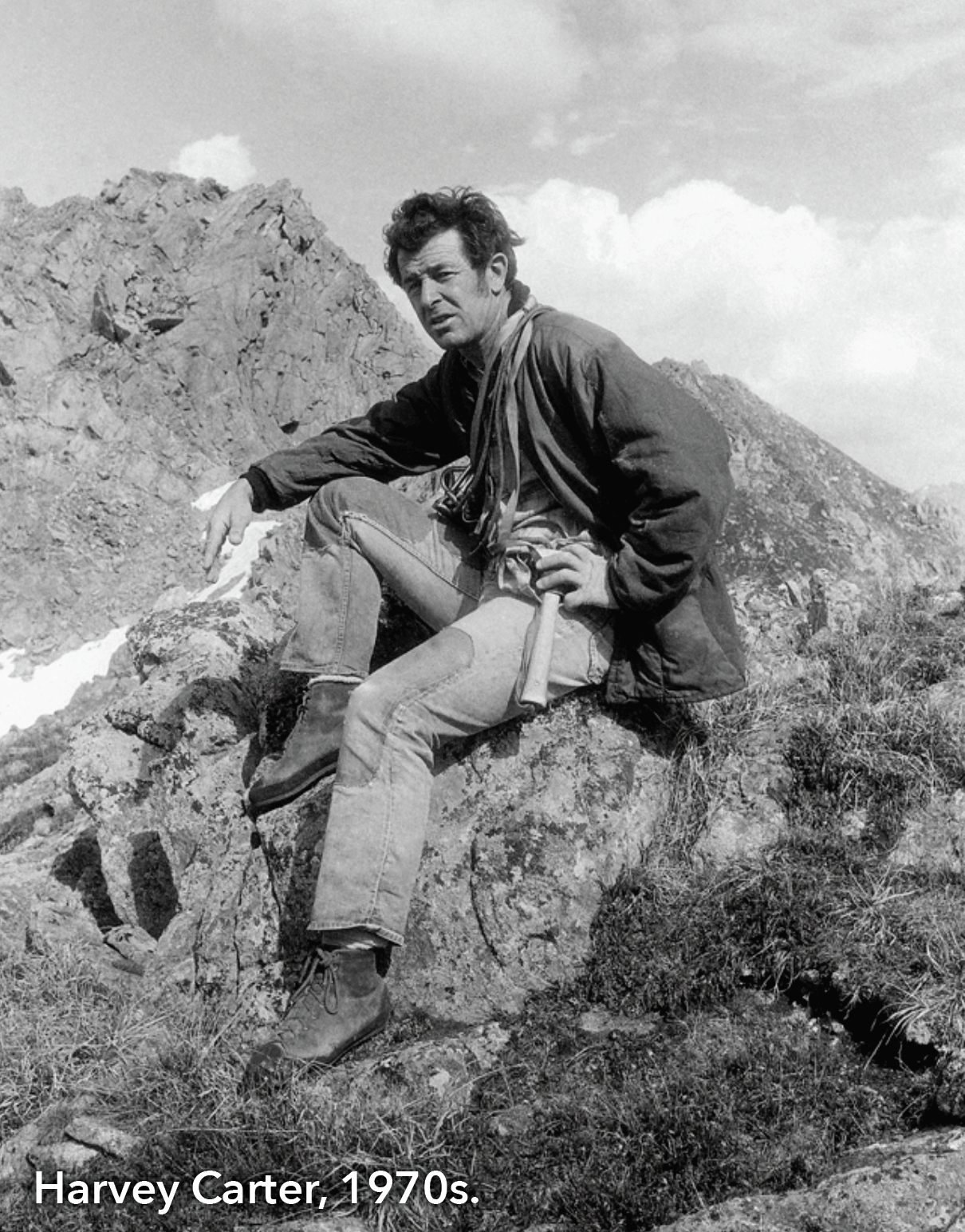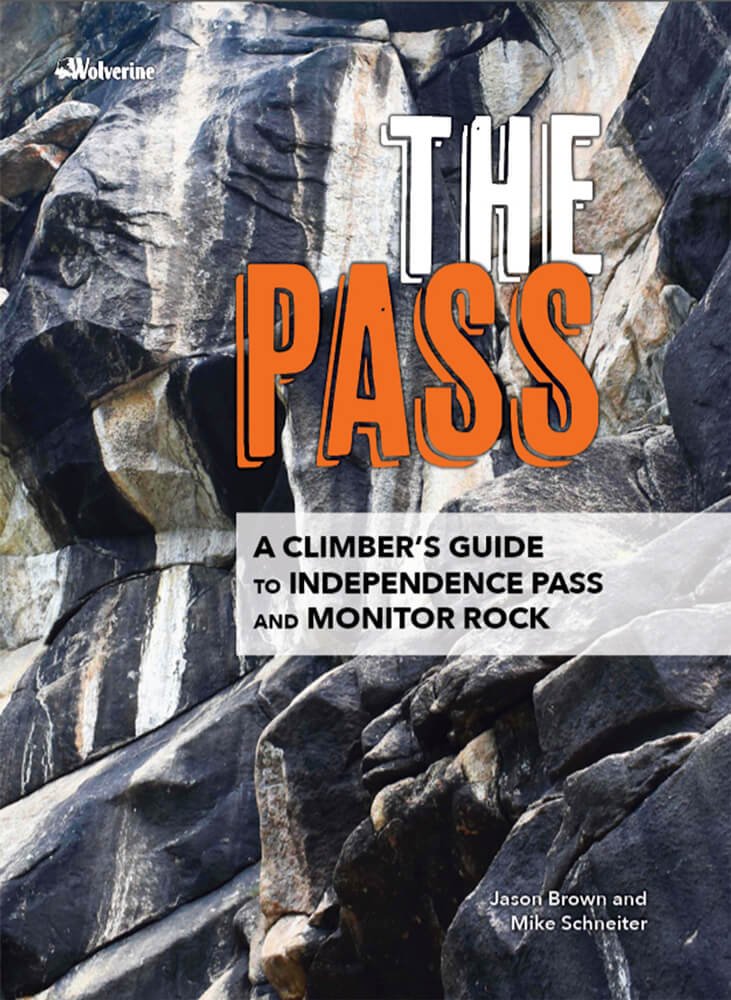Gettin’ High on Independence Pass: Tips For Climbing at Indy Pass in Colorado
Lynn Sanson on White Crack, 5.7, Wall Walls. Photo by Jeff Achey
Here in Colorado, summer can mean many things, but to rock climbers, it means Independence Pass climbing is finally on! At elevations from 9,000 to almost 13,000 feet, “The Pass” offers some of the state’s most scenic, accessible, and uncrowded alpine rock climbing.
Jay Brown (guidebook coauthor) on WireFire, 5.11a, Lower Grotto. Photo by Jeff Achey
Scattered between the towns of Aspen and Twin Lakes is a high concentration of routes on beautiful granite and gneiss cliffs. The variety is outstanding, from roadside bouldering to burly, overhanging sport routes, to multi-pitch trad routes. The Aspen ski area opened in the 1940s, drawing alpinists from Europe as ski instructors, and the local climbing has a fascinating history as a result. You’ll also enjoy some of the best views on the planet.
One of Colorado’s 10 Most Scenic Drives, “Indy Pass” (AKA State Highway 82) traverses 37 paved miles from the glitzy ski town of Aspen on the west, over the Continental Divide, and back down to the tiny, historic town of Twin Lakes on the east. It ribbons through aspen groves and ponderosa pine forests, squeezes past granite walls and deadly drop-offs, tops out at the Divide’s 12,095 foot snow-capped summit, and rolls through lush tundra meadows laced by crystal-clear rivers. Because of the high altitude and narrow alignment, snow closes the pass each winter sometime around Halloween, until spring, usually around Memorial Day. (For spring and late-fall climbing, there are crags on both sides situated below the winter-closure gates, and riding bikes up on the Aspen side is always an option.)
The Pass provides climbers of all levels one of the best and most convenient summer and early autumn climbing destinations in Colorado. Most of the crags are on the Aspen side, an easy day trip from the Roaring Fork Valley downstream to Glenwood Springs. If you’re spending your summer climbing in Rifle Mountain Park, a trip to the Pass offers a refreshing change from the blocky polished limestone, with the closest crags still under a two-hour drive. Alternatively, for Front Range climbers, the east side of the Pass is even more convenient, and features the giant granite monolith Monitor Rock. The largest cliff on the Pass by far, Monitor is less than an hour’s drive from Buena Vista and Leadville. Another bonus: on either the east or the west, most crags have short approaches right off the highway — 20 minutes max, and some less than a minute — so you can visit many different crags in a day.
“The Pass provides climbers of all levels one of the best and most convenient summer and early autumn climbing destinations in Colorado.”
Where (and What) to Climb on Indy Pass
Independence Pass Overview Map
For the full experience, come for a couple days or more, camp at one of the beautiful Forest Service campgrounds (see more on camping below), and check out both sides of the Pass.
East Side
On the east side, Monitor Rock is the crag to see, with dozens of technical steep-slab climbs, mostly bolted and in the 5.9 to 5.11 range, plus half-day multi-pitch routes from 5.6 to 5.11.
West Side
On the west, our favorites are Difficult Cliff (well-named, mostly trad, with good afternoon shade), Weller (beautiful multi-pitch trad 5.7-5.10), Grotto Walls (a bit of everything and the Pass’ most historic cliffs), Olympic area (a half-dozen excellent mostly sport crags, but quite sunny), and the Sunset/Phat City crags above Lincoln Creek (both sport and trad, good morning shade).
Recommended climbing:
Scenic Cruise - The Nose, on Monitor Rock, one of the longest and most enjoyable 5.6s in Colorado.
Too hot? - Try the Ice Caves! Bring your down jacket and prepare for SLICK rock.
Trad testpieces for your sponsorship resume - Dean’s Day Off (12a), Lincoln Creek; The Avenger (13a), Sunset Cliff; Orangutan Overhang (14a), Dragon Rock.
Crazy-overhanging sport - Throw yourself at the 5.12 and 5.13s at the well-named Wild Rock.
Mellower sport - A local fave is Upper and Lower Bulldog, with lots of goodness in the 5.8-5.10 range.
Even easier - Baby Face for family fun.
Most exposed 5.8 ever? - Grotto Wall Traverse.
Historical photo of Harvey Carter. Photo credit Michael Kennedy
Climbing History and Culture on The Pass
Wolverine Publishing released a new guidebook to Pass climbing in 2023: “The Pass: A Climber’s Guide to Independence Pass and Monitor Rock” by Jason Brown and Mike Schneiter. The beta is excellent, and the book also details Indy Pass climbing history and some of the iconic rock warriors who established routes there: Harvey Carter, Henry Barber, Lou Dawson, Michael Kennedy, John Long, Lynn Hill, and many more.
Despite the elite abilities and fame of some of the first ascensionists, and the swanky reputation of Aspen, the local climbing community was an understated and humble bunch. And, refreshingly, it still is. What a welcome reprieve from the crowded, agro-sender scenes of many other Colorado climbing areas!
Rest Days
The Twin Lakes General Store. Photo by Mike Schneiter
For town days, no two towns could be more different than the tiny, stuck-in-history Twin Lakes (population 348), and Aspen, the World’s Most Expensive Ski Town. The awesome Twin Lakes General Store (summer only) offers ice cream cones, bags of ice, camping necessities, and even a liquor department … but it’s pretty much the only game in town. In Aspen, on the other hand, you can browse the Gucci and Prada shops, swing by Ralph Lauren, then hit one of the nicer restaurants and spend $1500 on cocktails.
Don’t forget your bathing suit to enjoy the world-class swimming holes, your sunscreen and hoodies to beat the intense UV rays, your paddle board and mountain bike to enjoy on your rest days, and of course, a rain jacket. Chances are, you will use them all!
Camping at Independence Pass
Gone are the days of free and easy dispersed camping on the Pass. With some research and patience you may still be able to pull it off, but consider yourself warned. The beta changes constantly and free sites are harder to come by each year. Fortunately, for there are plenty of developed campgrounds near the climbing.
John Catto on Grotto Traverse, 5.8, Lower Grotto. Photo by Jeff Achey
East Side
If you are driving from Colorado’s Front Range through Leadville, or from points south such as Santa Fe, you may find it easier to stay on the east side. There are three climber-convenient Forest Service campgrounds in the Monitor Rock area: Twin Lakes, Parry Peak, and Twin Peaks. All are very popular due to the fact that Mount Elbert (14,439 feet) looms nearby, so they serve as base camp for many wishing to scale Colorado’s highest peak. Also, the Twin Lakes themselves are favorites with boaters and paddle boarders. The Colorado Trail runs through Twin Lakes and is a great place to mountain bike and hike. It is pretty much vacation paradise, so reserve your site early if you can!
West Side
If you are coming from the west, you’ll probably try for a campsite on the Aspen side. Starting closest to town, you’ll find the USFS campgrounds of Difficult, Weller, Lincoln Gulch, and Lost Man; each with varying amenities, stay limits, and reservation vs. first-come, first-served options. A great feature of the Difficult, Weller, and Lincoln Gulch campgrounds is that you can hike to climbing without getting back in the car. There’s also great hiking nearby.
Check out recreation.gov, or the Forest Service website for more information and reservations.
Travel Tips: Weather and Traffic
As you research camping, also check the weather before your venture out. But take it with a grain of salt and be prepared. Storms in the mountains can be unpredictable and remarkably fast-moving. Even if the forecast for Twin Lakes and Aspen is for a high-pressure heat dome, gnarly hail-dropping thunderstorms can appear over the 14,000-foot peaks with no notice. Conversely, the intense alpine sun can be a challenge. In the heat of the afternoon, most climbers will want to seek shade, so research your options. The guidebook has lots of helpful sun/shade information.
Also be sure to check the CDOT website for any road construction or delays. Try to avoid times when music festivals are happening in Aspen, especially around Labor Day, as camping becomes more sought after than Taylor Swift tickets. If you’re flexible, it’s advisable to come during the week.
There’s a lot going on up Independence Pass besides gawk-worthy views and tourists! You may have to deal with slow traffic and wacky weather, but you will be rewarded with true high alpine scenery, wonderful camping, and excellent rock climbing. So if summer in the low country is getting too hot to handle, head to the Pass for one of the best high-country getaways around!
The Pass By Jason Brown & Mike Schneiter
The Pass – Independence Pass – offers the finest high-country cragging in the Colorado Rockies. Even though climbing has been documented here since the 1950s, this is the area’s first full-color guidebook. The highly featured granitic rock of the Pass offers almost 1000 routes, from bolted 5.4 slabs, to 5.14 roof cracks, to hundreds of fun-in-the-sun mid-grade climbs. Technical and vertical, overhanging and pumpy, sport, splitter cracks, multi-pitch — all styles are there for you, set in a beautiful subalpine forest below snow-covered peaks.
The main concentration of climbing is near the popular Grottos area 10 miles east of Aspen, but all the nearby climbing is documented, too. The newly opened Gold Butte area just outside of town offers a fun cold-weather option on unique sandstone. On the other side of the Pass, Monitor Rock and the Twin Lakes crags get the full treatment, with lots of never-before-published climbs, including the new long, bolted, multi-pitch journeys that are getting rave reviews. When you’re not climbing there’s great camping and swimming, and mountains to climb. For a more urban experience, you can hit the glitzy bars or tour the art galleries of the legendary town of Aspen, right down the road.








